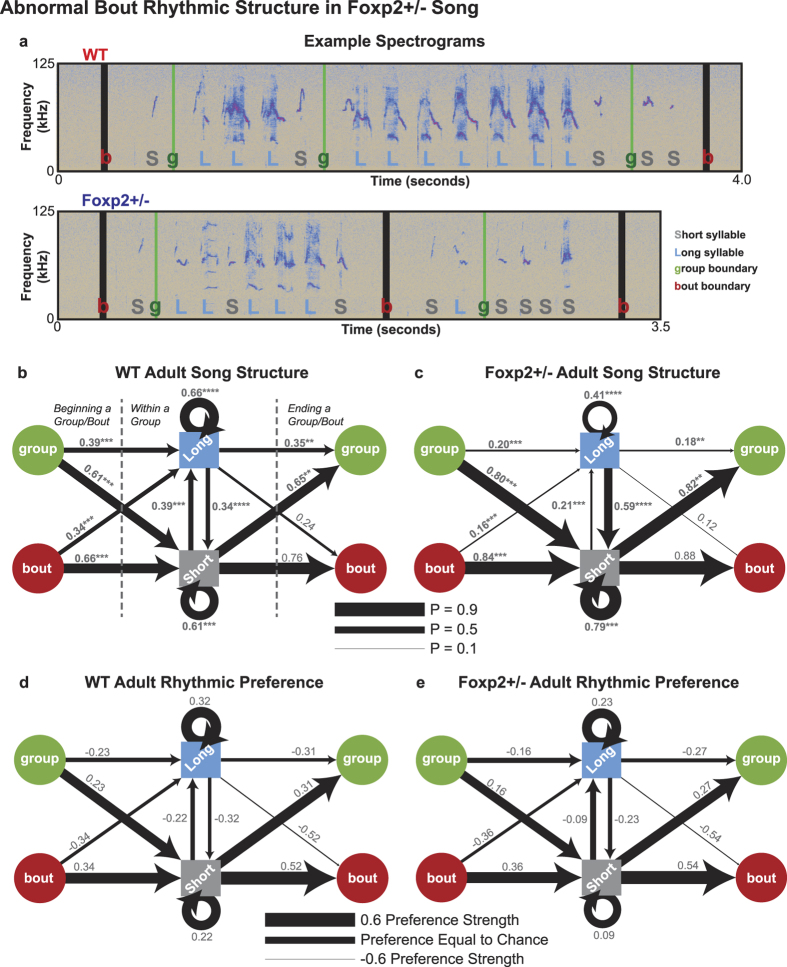Figure 4.
Abnormal Bout Rhythmic Structure in Foxp2+/− Song. (a) Example spectrograms of typical rhythmic structure in adult WT song (top) and adult Foxp2+/− song (bottom). Short syllables, long syllables, group boundaries, and bout boundaries are labelled as S, L, g, and b, respectively. (b,c) Average conditional transition probabilities of starting groups and bouts on either long or short syllables (left side of panel), ending groups and bouts on either short or long syllables (right side of panel), and producing short or long syllables given the production of a short or long syllable (center of panel) in (b) adult WT and (c) adult Foxp2+/− (SR > 90) song. Arrow weights indicate the magnitude of a transition’s probability. Significant differences in between genotypes are bolded. (d,e) Average Preference Strengths for the transitions in (b,c) in (d) adult WT and (e) adult Foxp2+/− (SR > 90) mice. Arrow weights indicate the magnitude of a transition’s Preference Strength. Significance is reported as follows: *p < 0.05; **p < 0.005; ***p < 0.0005; ****p < 0.0001; ordinary one-way ANOVA with Tukey’s Correction for multiple comparisons. Additional statistical details are presented in Supplementary Table S1.

